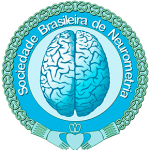Scientific Journal Neurometry
Revista Científica de Neurometria
Instructions for Authors
Editorial Contact Information
Scientific Department of the Brazilian Society of Neurometry
Adress: Benedito Branco de Abreu Street 102 Butantã – São Paulo / SP – Brazil – Zip Code 05541-090
Copyright
Preparation of Manuscripts
Authors are strongly encouraged to submit manuscripts online. This will allow even quicker and more efficient processing of your manuscript.
Title Page: The following elements must be included:
- Title of the article;
- Name(s) and initial(s) of author(s), preferably with first names spelled out;
- Affiliation(s) of author(s);
- Footnotes to the contribution title;
- Name, address, telephone and fax numbers, and e-mail address of the corresponding author.
Abstract: Each article is to be preceded by a succinct abstract, of up to 250 words, that highlights the objectives, methods, results, and conclusions of the paper.
Key Words: To identify the subjects under which the article may be indexed, 6-10 key words should be provided.
References: In the text, references to the literature should be by author and year; where there are two authors, both should be named; with three or more only the first author’s name plus “et al.” need be given. The list at the end of the paper should include only works mentioned in the text and should be arranged alphabetically by name of first author. References should be cited as follows:
- Journal papers — name(s) and initial(s) of author(s), year in brackets, full title, name of the journal as abbreviated in Chemical Abstracts, volume number, first and last page numbers:Quiring R, Walldorf U, Koter U, Gehring WJ (1994) Homology of the eyeless gene of Drosophila to the small eye gene in mice and aniridia in humans. Science 265:785
- Books — name(s) of author(s), year in brackets, full title, edition, publishers, place of publication, page number:Maizels N, Weiner AM (1993) The genomic tag hypothesis: modern viruses as fossils of ancient strategies for genomic replication. In: Gesteland RF, Atkins JF (eds) The RNA world. Cold Spring Harbor Laboratory Press, New York, pp. 577 — 602 Li W – (1997) Molecular evolution. Sinauer Assosiates, Sunderland, MA
Responsibility for the accuracy of bibliographic references rests entirely with the author, who is requested to use as few “in press” citations as possible. In press citations must include the name of the journal that has accepted the paper.
Footnotes: Those in the text should be numbered consecutively. Footnotes to the title or authors of the article are marked by asterisks and placed on the title page.
Sequences: Sequences that are used merely as data points in statistical calculations or graphs should, if possible, be referred to by their accession numbers only. Authors should be quoted by name when their sequences are discussed individually or presented in alignments.
Illustrations: These should be suitable for reproduction, and should clarify or shorten the text. Information provided in figure legends should not be repeated in the text. Figures and graphs should always be mentioned in the text and numbered with Arabic numerals. Preferred file formats include .tif and .jpg; please see Manuscript Central for more details.
Color Figures: Color can be used without charge for the electronic edition of the journal.
Computer Software: Any software referred to among methods used must be obtainable either commercially or upon request from the authors. In submitting a manuscript to the Journal, authors accept the obligation to furnish upon request any information necessary for reproducing the methodologies on which their results are based. The methods used for preparing and analyzing alignments must be stated precisely.
Mathematical Equations: These should be clearly prepared, and annotated if necessary. Primes and dots must be called to the attention of the typesetter. Differentiate legibly between number 1, capital letter I, and lower case letter l. Use fractional exponents instead of root signs and the solidus (/) for fractions wherever their use will save vertical space. Use exp () notation when the exponent is sizable. All equations must be numbered sequentially, on the right-hand side of the column, in parenthetic Arabic numerals.
Organisms: Must be identified by their scientific binomen.
Guidelines for Electronically Produced Illustrations for Print
Upload illustrations separately from the text (i.e. files should not be integrated with the text files).
Vector (line) Graphics
Suitable drawing program: Adobe Illustrator. For simple line art the following drawing programs are also acceptable: Corel Draw, Freehand, Canvas.
No rules narrower than .25 pt.
No gray screens paler than 15% or darker than 60%.
Graphics from Videos
Separate files should be prepared for frames from a video that are to be printed in the journal. When preparing these files you should follow the same rules as listed under Halftone Illustrations.
Guidelines for Electronically Produced Illustrations for ONLINE
Appendices and Supplementary Material
